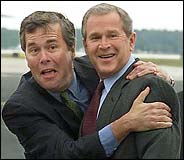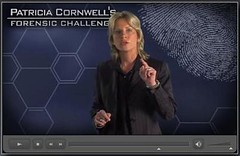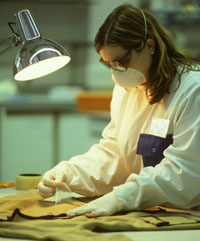

submit by troym; comments by blogger jgl
"Waiter, there's a dandelion seed in my jihad!"
| Federal investigators are using pollen to try to track and catch criminals and even terrorists. It's one of a number of new forensic techniques being explored in the wake of 9-11. Vaughn Bryant looks at pollen for microscopic clues that could help solve a crime or even catch a terrorist. The Texas A&M professor has pioneered the use of pollen as a forensic tool. “One of the advantages that we have the bad guys, the crooks, don't realize that their clothing, their hands, things that they come in contact with are picking up these little microscopic pollen grains that they don't even see,” Bryant said. All of the pollen that people are breathing in is also landing on our clothes, landing on the ground. So the pollen at A&M is going to produce a pollen print as we call it kind of like a DNA, which is going to be fairly unique to the one area. |
In theory, this is a good idea. As long as an expert doesn't get on the stand and say, "The pollen print at the crime scene and the pollen print on the suspects trousers were a *match*." This is one of those areas where quantifying what a *match* means might be tough. Is it specific to a city? A neighborhood? Someone's yard? And how much does it remain consistent over time?
But I guess that is what research is for... This would be good project to conduct in many different geographical locations with the help of a lot of investigators. It's a shame that any old idiot/lab monkey couldn't do this. It seems like only a very experienced botonist would have the skills to conduct the analysis.











